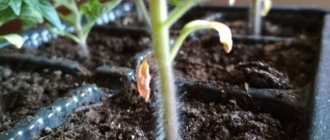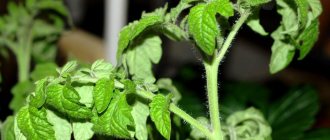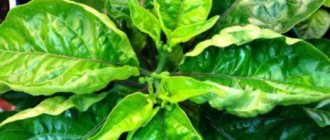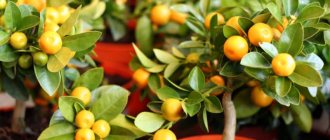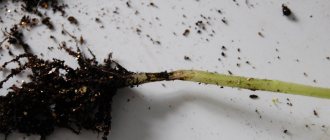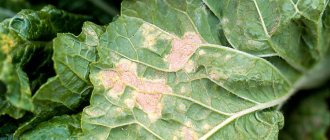In today's episode:
Pepper is one of the favorite crops of gardeners. It is difficult to find a person who would ignore it and never try to grow glossy, aromatic fruits in their garden.
As the season approaches, let's talk about pepper seedlings and the possible problems that anyone may encounter when growing this wonderful vegetable.
It would seem that they were planted, cared for, cherished, and suddenly they noticed that something was wrong with the seedlings. Let's figure out what's what.
We will look at the most common cases when peppers need urgent help and try to save your future harvest.
Why do pepper seedlings' leaves turn yellow?
How can you help a pepper if its leaves suddenly begin to turn yellow? For what reason does this happen?
Causes
Yellowing of the lower cotyledon leaves is not critical, but it is worth paying attention to. If all the leaves turn yellow, this is already an alarming signal. Thus, the pepper communicates that he is very uncomfortable. There may be several reasons:
- excessive or insufficient watering
- watering with cold or hard water
- lack of nutrients
- low temperature content
- diseases
Treatment
If the yellowing is not large-scale and clearly destructive, then the matter is most likely due to non-compliance with the growing conditions. You need to pay attention to watering. The soil should not be constantly wet, this promotes rotting of the root system, but also the earth ball should not dry out completely. Balance is needed. Some articles strongly recommend “abundant, abundant watering,” but we want to argue that everything should be in moderation!
Just when watering, the earth ball should be well and completely moistened. It should be just damp, not soaking wet. And re-watering should be done only when the top layer of soil dries out.
Check that when watering, water does not flow down the walls and further into the pan, and at the same time the earthen ball itself remains almost dry. This happens when the soil is not loose enough, it is compressed and forms gaps between the walls of the container and the earthen lump. If this happens, loosen the soil around the edges.
Water for irrigation should be settled, soft enough and its temperature should be at least 24-25 degrees. Do not water or spray peppers with cold water.
The soil must be loose and breathable. If the soil is very clumpy, it is heavy and dense, then the moisture will certainly stagnate and cause rotting of the roots and, as a result, poor nutrition of the plant and its yellowing from a lack of necessary substances.
It is this bright yellow color of the leaves that signals that the conditions listed above have been violated.
If you planted the seeds in clean peat or coconut substrate, or maybe not in very high-quality, poor soil, then the seedlings no longer have enough nutrition. This is especially noticeable in greatly grown seedlings, which suddenly begin to slowly turn yellow leaves.
Also, due to a lack of iron and magnesium, chlorosis of the leaves occurs, while the leaf blade turns yellow and the veins stand out clearly.
The seedlings need to be fed, not only with nitrogen fertilizer, but with a complex set containing not only nitrogen, but also potassium, phosphorus, iron and other necessary elements, without which the sprouts also starve. Use Gumat + 7 or Zdraven turbo for seedlings.
Fertilizing with these preparations can be done not only by the root, but also by spraying. It is produced with a nutrient working solution on the undersides of the leaves. It is important that the water is not cold!
Also, to avoid yellowing, pay attention to the temperature of the seedlings; it should be at least 22-24 degrees. Avoid drafts and cold air currents when ventilating.
Yellowing also occurs due to some diseases, such as mosaic, phytoplasmosis (stolbear), black leg, more about them below.
Preventative measures for yellowing peppers
In fact, growing bell peppers at home is not particularly difficult. The main thing in this matter is to follow the recommendations of experienced gardeners.
They include:
- It is recommended to plant bell pepper seedlings in open sunny areas. The occurrence of burns on the surface of sheet plates can be prevented using a special design. It consists of wooden stakes, on top of which a mesh with small holes is fixed. Thanks to it, it is possible to create shading for 2-3 hours;
- Pay special attention to watering. It must be carried out in the evening or early morning. In hot summers it is necessary to increase the amount of soil irrigation. For the normal existence of a vegetable crop, it is enough to irrigate the root space 4 times.
- To prevent the plant from becoming infected with mosaic, it is recommended to purchase high-quality planting material. You can purchase it at special garden centers or flower shops. Disinfect garden tools regularly.
- The presence of aphids on the surface of leaves and inflorescences of a vegetable crop can cause the development of serious diseases. If parasitic microorganisms are detected, it is recommended to use fungicides.
- When planting, do not bury the pepper bush deeply. The root collar should protrude 1-2 mm above the ground surface.
- Regular fertilizing can enhance plant growth and increase its productivity. How to feed peppers if they have pale leaves? To do this, it is recommended to use mineral compositions that contain balanced parts of nitrogen, potassium, and phosphorus. Nitroammophosphate is suitable for this.
During flowering and formation of ovaries, he recommends using urea, ammonium nitrate or ammophoska. For better absorption of nutritional components, it is recommended to dilute the granules in a container with water and water each bush.
When growing pepper seedlings yourself, you must use special soil. Yes its preparations are used:
- 1 part black soil;
- 2 parts river sand;
- 1 part peat.
It is not recommended to plant seeds in a container with clean peat. The fact is that this vegetable crop cannot tolerate high acidity of the soil. A high PH level provokes a reduction in the growth rate and formation of vegetable ovaries.
You may also find the following materials useful:
- Tips for feeding carrots in July to keep them sweet and large
- Why are carrots bitter? 6 possible causes of bitterness in carrots
- How to grow chives: basics of caring for garden perennials
- How to properly pick the stems of tomatoes. When to pick tomatoes in 2022 according to the lunar calendar
- Why do tomatoes burst in open ground and greenhouses when ripe?
Pepper seedlings grow poorly
Are the pepper seedlings weak, thin, lethargic, sitting around and not really wanting to grow big, to your delight? What is the reason?
Causes
The frailty of seedlings and its slow growth may be due to the following factors:
- low temperature content
- poor quality, old seeds
- lack of nutrients
- lack of lighting
- weak root system
Treatment
If the seedlings are not pleased with rapid growth, but seem to have “frozen”, stubbornly sitting in one pore and embarrassing you with their puny appearance, you should pay attention to the air temperature. When seedlings are cold, they categorically refuse to grow and wait for better times. As already mentioned, maintain 22-24 degrees and no drafts.
Again, we forget that a lot depends on the initial planting material. Some manufacturers are now unscrupulous in the production of their goods. If the seeds are not very good or old, this can be seen both by germination and by the appearance of the plants that emerge from these seeds, they will be weak, with poor immunity, and only ideal care will allow them to survive and grow stronger. We will have to actively feed such seedlings and be sure to use products for improved root formation and immunity, so that the nutrients we add to the plant can be fully absorbed.
We talked about the lack of nutrients a little higher; peppers, as a rule, turn yellow. But sometimes obvious yellowness may not be observed. The shoots may simply be pale green, thin, weakened and slow to grow. In this case, it is better to immediately feed with complex fertilizers for seedlings.
If the seedlings were planted early in February-March, when the sunny day is not yet so long, and if the seedlings are placed on poorly lit windows (for example, north, east and west sides), then do not be surprised if the pepper seedlings become capricious , will grow frail, thin and greatly lengthened. Such plants are vulnerable to all diseases because their immunity is initially weakened. In such conditions, additional illumination with fluorescent lamps or red-blue spectrum lamps is simply necessary.
An important factor influencing the growth of seedlings is insufficient development of the root system. This is rather a consequence of the quality of the seeds and growing conditions (watering with cold water inhibits the development of roots), but again it leads to the fact that the seedlings look weak and grow slowly. In this case, it is necessary to use drugs that improve root growth and the general well-being of plants, such as Kornevin, Atlet, Zircon, Epin, Heteroauxin, Energen.
Errors in agricultural technology
Novice gardeners do not always take into account such factors that pepper is a delicate plant that loves moisture, warmth, light and non-acidified soils. If the seedlings lack any of the above, they will definitely let you know by changing their appearance. These factors are often the main reasons why pepper leaves turn yellow.
Supplemental lighting, sufficient moisture 2 times a week, maintaining the temperature at +23, +25 degrees during the day and at least +16 at night, and the use of alkaline soils during cultivation can solve the problem with seedlings.
Leaves on pepper seedlings often turn yellow after picking as a result of damage to the root system. However, it grows poorly. Feeding with Kornevin 3-4 days after transplantation or any other rooting agent will help correct the situation.
Why do the leaves of pepper seedlings curl?
If your pepper seedlings are curling their leaves, you need to pay attention to the following factors.
Causes
- uneven growth caused by soil conditions or excess fertilizer
- lack of potassium
- pest or disease damage
Treatment
If you notice curled leaves, then the most important task is to check the seedlings for pests. Carefully examine the plant for the presence of insects, these could be aphids, spider mites, etc. If any are found, immediately use insecticidal preparations to expel the parasites.
In addition, the causes of curling can also be fungal diseases, which are also characterized by spots, blackening, gray or brown moldy spots that quickly grow and cause rotting. In this case, spraying with Fitosporin or another fungicide is indicated.
It is worse if the plant has become a victim of a viral disease. Such, for example, as tobacco mosaic, in which the leaves are curled into a boat, and the curling is accompanied by deformation, uneven spotty coloring, with chlorotic yellowness along the edges.
Tobacco mosaic in pepper
An equally unpleasant disease is phytoplasmosis (also known as stolbur), although it is not the most common. When it occurs, the pepper leaves twist upward, turn yellow and become deformed, and fruit formation is disrupted.
Phytoplasmosis (stolbur)
A damaged plant, even if it did not die immediately and survived, will no longer be able to produce a good harvest. Diseased plants are destroyed to avoid further infections.
If it is difficult for you to recognize what kind of disease has affected your seedlings, you can use the method of elimination. Treat seedlings comprehensively against pests and fungi.
In some cases, everything is not so serious and curling may be caused by improper feeding.
Pepper seedlings are sensitive to fertilizing. Sometimes it happens that purchased soil does not meet the requirements.
This entails uneven growth of leaf plates, their deformation; leaves may grow crooked, but at the same time they are green, healthy and shiny. The same thing happens if you overdo it with fertilizing, if its dosage is incorrect. These deformations do not lead to any critical consequences, and there is no need to fight them.
A lack of potassium may also be to blame for leaf curling. It can be replenished by adding wood ash or potassium nitrate under each bush.
Pepper - plant of the sun
The decorative value of indoor peppers is not at all in the flowers, which look very much like tomato, potato, or nightshade flowers. It’s not for nothing that all these fruiting plants are part of the vast nightshade family! What makes it especially attractive are the fruits: bright, as if lacquered, in all the colors of the rainbow, they flaunt on one plant, like toys on a Christmas tree. It’s not for nothing that indoor peppers are often called Christmas peppers!
In color they are green, red, yellow, orange, purple and even white. It depends on the variety and degree of ripeness. It is interesting that one bush can be decorated with barely set fruits, already half ripe and completely ripe. They also vary in shape: round, oval, bell-like, or cones, some hanging down, others pointing upward, like candles.
photo by the author
Note: All fruits, regardless of color, are edible. But be careful, this pepper is for those who like it spicy! Moreover, on one plant, green fruits may have a subtle tang, but red fruits will have an “eye-catching” taste.
The decorative pepper we are familiar with came from a Mexican capsicum. The name of this species, capsicum annuum, comes from the Greek word "kapto", which means "to bite" and primarily refers to the pungency of the "biting" fruit. By the way, the substance that causes this pungency is called capsicin! The second word in the name “annuum” translated from Latin means “one-year-old”, which is actually wrong. After all, indoor hot peppers in suitable conditions can bloom and bear fruit for 5-6 years.
Golden Horn
Aladdin
Fireworks
In its homeland, Mexico, Guatemala and Cuba, pepper grows into a lush evergreen shrub up to 1 meter high. To the delight of flower growers, there are currently many varieties with a compact bush no more than 50 cm in height and miniature fruits up to 10 cm in length. Typically, such varietal peppers are prepared in advance for all indoor deprivations. Depending on the variety, the taste will be different: from sweetish to very hot.
Black Pearl
Habanero white
Habanero red
variegated fish
It is not entirely correct to call indoor peppers capsicums. After all, in fact, this name refers it to the legume family (peas and beans). Peppercorns, which are an evergreen vine up to 10 m long, have real pods. At the same time, the black “peas” familiar to housewives are obtained from unripe pods, and white peppers are taken from almost ripe ones. But the fruits of the Mexican pepper are more likely to be berries, like all its fruit relatives from the nightshade family.
✿
Why do pepper seedlings wither and fall leaves?
Why do seemingly healthy green leaves suddenly begin to wither, dry out and fall off?
Causes
- verticillium or fusarium wilt
- lack of watering
- bay
- pests
Treatment
Unfortunately, Verticillium wilt and Fusarium wilt are two such diseases for which treatment is not effective. Seedlings exposed to these diseases rapidly wither, wither and die, sometimes even before they turn yellow. Infected plants are destroyed. Only multi-stage comprehensive preventive measures can save you from them. The diseases look approximately the same, the only difference is the pathogen.
Fusarium
The leaves of pepper seedlings lose their elasticity both with insufficient moisture and with excess watering. Humidification needs to be adjusted.
And of course, the culprits of leaf lethargy can be pests that quietly draw juices from the plant. Check the seedlings for spider mites, aphids and other pests. If any are found, treat with insecticides.
No help needed
Pepper seedlings lose their lower leaves, called cotyledons, due to natural senescence. The seedlings no longer need these yellow leaves - the plant is strong enough and ready to be transferred to the ground. In this case, the turgor of the stem and the remaining green leaf blades is sufficient, and no traces of drying or rotting are noticeable.
If the first pair of upper leaves has not formed, and the seedlings below have turned yellow, you need to analyze the reason for what is happening. The reasons, as already mentioned, may be improper watering, temperature changes, hypothermia, pests and diseases. In the latter case, the seedlings cannot be saved.
You may be interested in:
How to plant pepper seedlings in the ground? If you are planning to grow sweet peppers at your summer cottage in the summer, then try to do it yourself from...Read more...
White, gray, black and brown spots on the leaves of pepper seedlings
Any spots on the leaves indicate a plant disease.
Causes
- bacterial diseases
- fungal diseases
- viral diseases
Treatment
White spots with a brown border (pictured) are characteristic of the disease septoria. This is a fungal disease and needs to be combated with antifungal drugs.
The same is the case with powdery mildew of pepper - when whitish focal spots or white coating appear on the leaves, both on the outside and on the inside. Immediate treatment with fungicides is necessary.
Brown and black spots can be signs of bacterial spotting, dry spotting, and many other bacterial lesions. In this case, it is necessary to treat the seedlings with Phytoflavin.
Wet, brown and putrefactive spots appear when the disease is late blight; it is also fungal and the plants must be treated with drugs against the fungus.
In case of any disease, if part of the seedlings are still healthy, there is a good chance of saving it. Plants that have not yet been damaged are treated with antifungal drugs and antibiotics, the soil and planting container are completely replaced and pre-disinfected. After transplantation, the seedlings are treated with immune stimulants such as Epin.
Possible causes of leaf falling
When studying the reasons that cause the loss of leaves in pepper, pay attention to its type and growing conditions.
Different types of pepper
Bell peppers are primarily sensitive to nutrient deficiencies , especially potassium, calcium, nitrogen and phosphorus. In addition, it needs plenty of sunlight. In a region with often cloudy weather, it is better to grow sweet peppers in a greenhouse, as additional lighting can be created there.
For decorative peppers you need a bright and well-ventilated place. Hot (bitter) peppers also need plenty of sunlight.
Under different conditions
The development of the pepper is closely monitored at every stage of its development. If leaves fall or turn yellow, evaluate the conditions in which the vegetable is grown.
In the greenhouse
There are a number of reasons why greenhouse peppers lose leaves:
- lack of light;
- the action of insect pests;
- humidity level is too low (norm - 75%);
- activity of bacteria and fungi;
- the air temperature in the greenhouse is below 15°C.
In the open ground
The reasons for yellowing of pepper leaves in open ground may be as follows:
- Disruption of root nutrition due to their intertwining. When transplanting, the roots are straightened, returning to normal.
- Insufficient moisture or watering with stagnant water.
- Depleted and improperly prepared soil. The optimal ratio of humus, sand and soil in the soil is 2:1:1.
- In a shaded place, plants' metabolism decreases, which also leads to leaf fall.
- Sudden temperature changes harm seedlings - pepper is heat-loving.
Black leg on pepper seedlings
The leaves of pepper seedlings turn yellow and become limp because the plant stops receiving nutrition because its stem rots at the base. The disease has a very clear localization; only the root area suffers and turns black.
As a rule, when infected with blackleg, young seedlings die. If large, well-developed seedlings are already sick, then the plants may survive, but their nutrition will be disrupted, and accordingly the yield will also be much lower.
Cause
This is an unpleasant disease caused by pathogenic fungi found in the soil. It is poor-quality, contaminated soil that causes the death of seedlings from blackleg.
And also, in many ways, the risk of disease is increased by excessive watering and inappropriate living conditions, and poor plant immunity.
Treatment
Sprouts that have already been affected by the disease will have to be removed. Those that are still healthy must be urgently transplanted into another, previously disinfected, soil and another container, treating the seedlings and their roots with Fitosporin before planting. After transplantation, spraying with Epin or Zircon is indicated.
Pepper diseases and their treatment
Pepper stems may bend to the ground with blackleg disease. Its pathogens are found in the soil and affect weakened or fragile specimens.
First, the subcotyledonous knee (root part) rots. It thins and turns black, then the tissues become watery and soften. With severe damage, the stems become limp and fall. The following factors contribute to the development of the disease:
- cold water for irrigation;
- contaminated soil;
- insufficient soil moisture;
- lack of fresh air.
Treatment for blackleg:
- Prepare a weak solution of potassium permanganate. Water the plant with it until the symptoms disappear.
- Loosen the soil and hill up the soil around the root collar.
- Sprinkle the soil with wood ash.
- If the disease is mildly affected, treat the bushes with Fundazol. The solution is prepared according to the instructions on the package.
- If a large number of seedlings are infected, they need to be planted in separate pots with disinfected soil. Place in a dark place for 5-6 days, and after rooting, transfer to the sun. The first watering should be done with the addition of Maxim or Fitosporin.
Pepper can also fall due to the development of fusarium. It affects the plant at all stages (from the beginning of germination). Due to infection, the foliage turns yellow and withers at the bottom; if you cut the stem, you can see a brown ring.
In case of mild Fusarium infection, the following remedies can be used:
- Agat-25K - destroys the causative agent of the disease, promotes rapid growth and good yield;
- Fitosporin-M - used for pre-planting treatment of soil and seeds, watering seedlings;
- Trichodermin - used before sowing and to prevent infections;
- Maxim - for seed treatment;
- Baktofit - normalizes microflora in the soil, prevents pathogens from developing;
- Potassium humate is an organomineral mixture from low-lying peat, applied to the ground.
If the damage is severe, these methods and traditional methods will not be effective. Plants cannot always be saved, but you can try the following potent chemicals:
- Abiga Peak;
- Acrobat MC;
- Quadris;
- Home, etc.
If the above remedies do not help, the diseased plants need to be dug up and destroyed. Disinfect the area of land where they grew. This is necessary to prevent other crops in the garden from becoming infected (for example, eggplants, cabbage, etc.).
Another disease is verticillium. This is a fungal infection that causes reduced growth, leaf shrinkage, wilting and falling off. First, the lower greenery dries, and limited chlorotic spotting appears on it, which over time affects the entire above-ground part. If the disease is not treated, the bushes will die.
The following chemicals are used for spraying and watering against Verticillium wilt:
- Vitaros;
- Fundazol;
- Topsin-M;
- Previkur;
- Maksim.
Fungicides are applied according to the instructions on the package.
Aphids on pepper seedlings
Symptoms
A large accumulation of small transparent green parasites, they can be seen with the naked eye. Aphids create colonies and enjoy collectively chewing on tender seedlings. It damages the leaves by sucking on and feeding on the juices of the plant.
Treatment
Of course, such a tenant needs to be driven out urgently with a filthy broom, otherwise, even if the bush survives this invasion, a good harvest may not be expected. Therefore, you should have some good insecticidal drug in your arsenal.
For example Fitoverm. It is the most harmless and can be used indoors, following the rules of safe use. It does not affect the future harvest, is biodegradable within 24 hours, and copes well with aphids.
But if you still prefer traditional methods of control rather than chemical ones, then these recipes for expelling aphids will be useful to you:
- spray the seedlings with vodka from a spray bottle
- spraying with ammonia (1 tbsp per 10 liters of water)
- spraying with a solution of laundry soap (50 g per 3 liters of water)
- processing with garlic and onion peels (1 tightly packed glass of a mixture of garlic and onion peels, pour 3 liters of boiling water. Leave for 3-4 hours. Dilute in 10 liters of water)
- treatment with tobacco dust (pour 1 kg of dust into 10 liters of hot water (about 60°C). Leave for a day, then strain)
How to help plants
Both in shelters and in open-air ridges, when changes in leaf color are detected and plant growth slows down, peppers require urgent help. They identify the cause and get to work.
Nutrition problems:
- the lower leaves turn yellow and fall off due to lack of nitrogen. With nitrogen starvation, the tips of the leaves turn yellow. Apply nitrogen fertilizers, observing the doses of fertilizers;
- deficiency of iron (yellowness in the center of leaf blades), calcium (irregular shape of leaves, spots), manganese (spots) is eliminated by adding complex compositions with microelements Agrovit, Agricola, Factorial;
- Lack of potassium (leaves turn yellow and curl down) appears more often in cold summers. Add ash, potassium sulfate, and muddy soil;
- To eliminate phosphorus deficiency, peppers are fed with superphosphate.
The first feeding after planting is done approximately 14-16 days later. Spraying on the leaves is indicated, for which potassium nitrate, nitroammophoska or concentrates of ready-made fertilizers are used.
If there is an excess of moisture, watering is temporarily stopped. The soil is mulched with hay, straw, rotted peat, humus, and ash is added. It is necessary to adjust the watering schedule, taking into account the age of the plants, conditions (beds, shelters), and weather.
For irrigation, use heated water +22ºC, avoiding moisture getting on the flowers, ovaries and leaves of peppers when watering. It is convenient to water in grooves, holes or use drip irrigation systems.
On hot days, greenhouses and greenhouses are opened, providing comfortable conditions for peppers. In this case, it is advisable to avoid drafts and overcooling of plants at night. The optimal air humidity in the greenhouse is 70-75%.
If it gets sharply cold outside, add solutions of Florist, Uniflor-bud, and Novosil. Feeding sweet peppers with Aurum-S gives good results.
For greenhouse peppers, it is important to avoid sudden changes in day and night temperatures, so the shelters are ventilated during the day and must be closed at night.
To control pests, insecticides and folk remedies are used:
- treatments with Arrivo, Bicol, Fitoverm, Inta-Vir help against aphids and whiteflies.
- You can get rid of thrips using Actellik and Akarin;
- Fitoverm, Iskrabio, Keltan, Bitoxibacillin will get rid of spider mites.
Among the folk recipes used to exterminate insects are infusions of celandine, yarrow, tobacco dust, decoctions of wormwood, and tansy. Spider mites cannot tolerate treatments with infusions of dandelion, garlic, and hot pepper. Before spraying, add shavings of laundry soap to the solutions (for adhesion).
If yellowing is associated with disease, spraying the plants with fungicides is recommended. Herbal infusions give results only in the initial stages, but if the degree of infection is serious, the plants are dug up and destroyed.
Treatment:
- for late blight, treatment with Strobi and ash infusion is indicated;
- whey solution helps against powdery mildew;
- gray and white rot are destroyed with Bordeaux mixture and other copper-containing preparations;
- Viral infections cannot be completely cured. But an iodine-milk solution or treatment with Afidol solution will help to weaken the impact of the pathogen in case of mosaic and stolbur.
How to avoid seedling diseases
Most of the disgrace listed above can be avoided at the stage of preparation for sowing seedlings. Yes, this is exactly how, by following simple rules, you can protect your crops from most problems.
So, the main methods of prevention that you must use before planting any seedlings are in this list:
- buy proven, high-quality seeds and treat them in a fungicide solution before planting
- if you take a used container for seedlings, pre-treat it (wash, scald with boiling water or a strong infusion of hot potassium permanganate, wipe with alcohol
- always disinfect the soil, both purchased and your own (this can be done by calcining it in the oven, steaming it in the microwave for 20 minutes, or pouring it with a hot dark solution of potassium permanganate)
- After heat treatment of the soil, in order to return beneficial microorganisms to the soil, water it with the biological preparation Baikal and just leave it to stand for a week
- the soil for seedlings should be loose, with a high content of peat, coconut substrate or perlite, this is necessary to avoid its compaction, which entails stagnation of water
- It is necessary to additionally illuminate the seedlings, if you have a shady side and planting is done in February-March, this contributes to good plant immunity
- do not thicken the plantings, try to avoid crowding. Pick up small seeds immediately, without waiting for real leaves, or immediately thin out the plantings after germination
- do not expose the seedlings to drafts and direct flows of cold air when ventilating; a damp earth ball freezes very quickly and negatively affects the development of roots
- ensure good drainage and regulate watering
- To be on the safe side, you can spill the soil with Fitosporin, the Healthy Soil preparation, or put Glyocladin tablets in it to prevent fungal diseases
These apply to absolutely any seedlings. Follow these simple rules and your peppers will delight you with their health and wonderful harvest!
If you liked this article, share it on social networks with your friends, we will be very pleased.
61
Prevention of pepper wilting
Prevention begins with proper planting . In mid-latitudes, peppers are grown only as seedlings, and then in a greenhouse, in soil specially prepared a year before. They need to be planted at a distance of at least 3 cm from each other.
Particular attention should be paid to the soil if diseased plants previously grew in it. It is not recommended to plant peppers in place of potatoes, eggplant or tomatoes. Good predecessors are carrots, dill and onions.
Use only high-quality and proven seeds from healthy fruits, choose disease-resistant varieties and hybrids.
